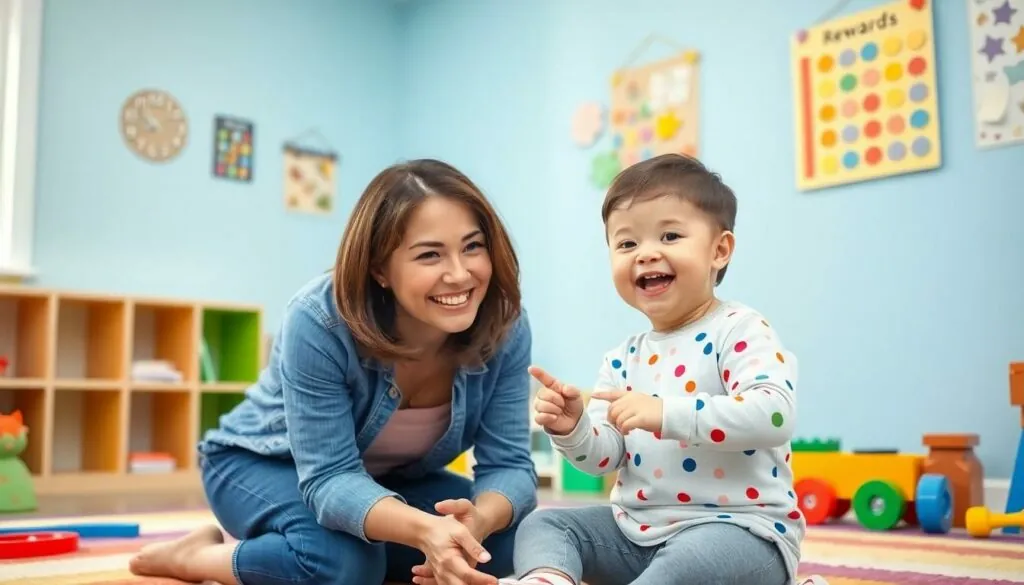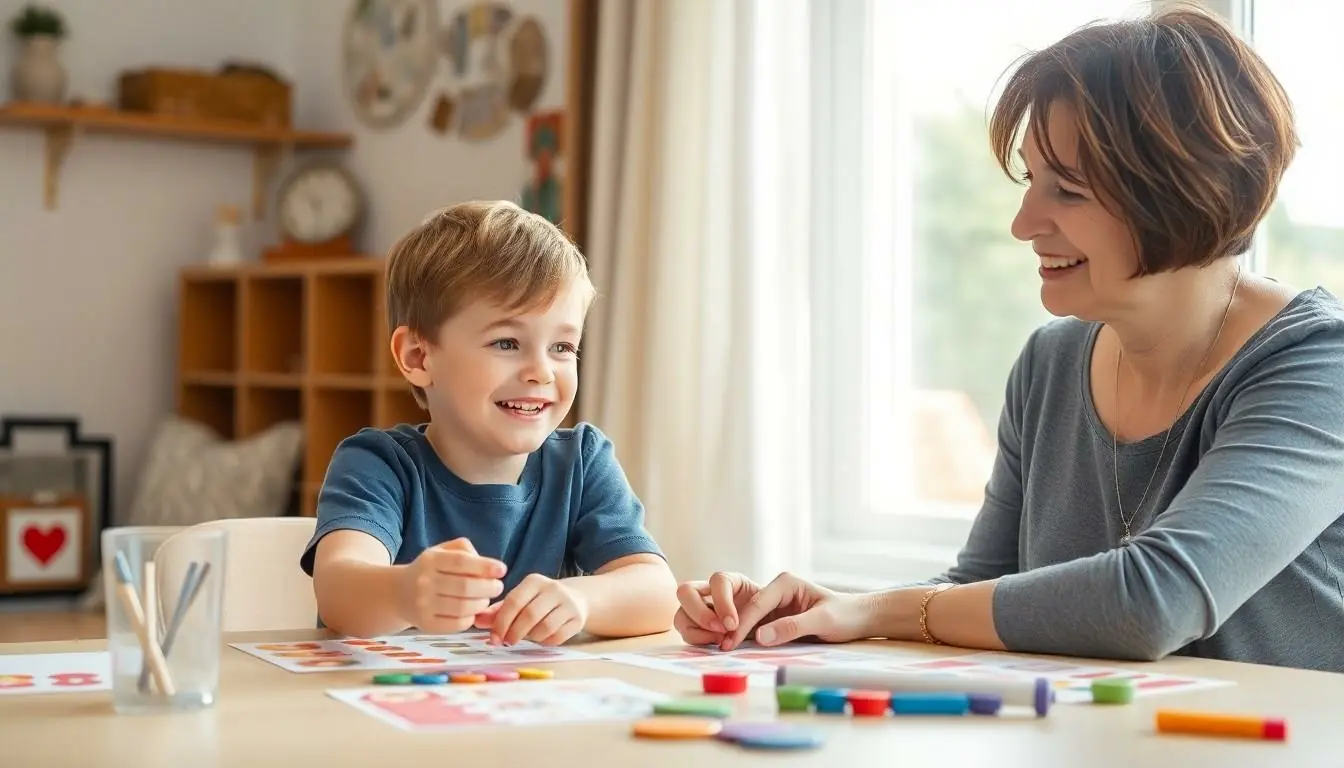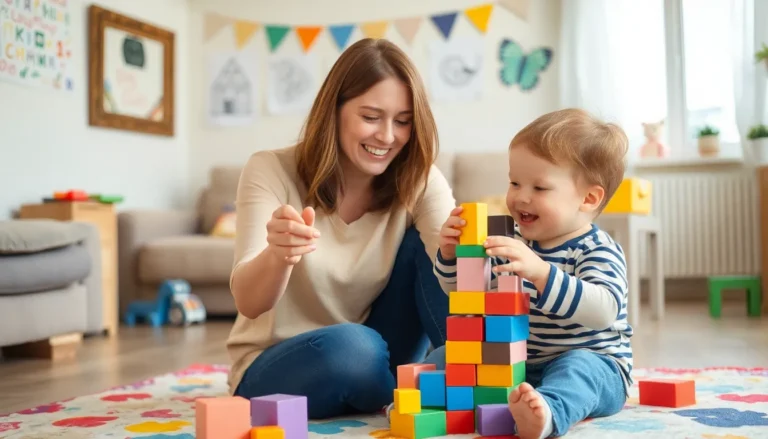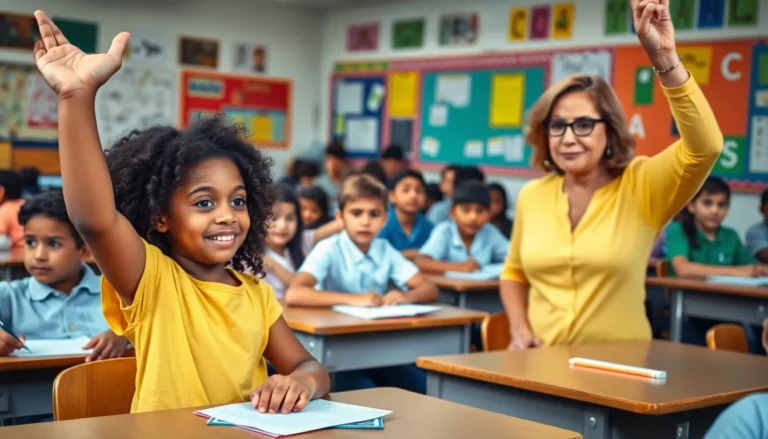Table of Contents
ToggleDisciplining a child with ADHD can feel like trying to herd cats on a rollercoaster—challenging and a bit wild. Parents often find themselves juggling between understanding their child’s unique needs and maintaining order in the chaos. But fear not! With the right strategies, it’s possible to create a structured environment that encourages positive behavior while keeping the fun alive.
Imagine turning those daily battles into opportunities for connection and growth. By embracing tailored techniques that resonate with children who have ADHD, parents can foster an atmosphere where discipline meets understanding. It’s not just about rules; it’s about building a partnership that empowers kids to thrive. So let’s dive into effective methods that can transform discipline into a rewarding journey for both parent and child.
Understanding ADHD and Its Impact on Discipline
Understanding ADHD is crucial for effective discipline. Children with ADHD commonly exhibit impulsivity, hyperactivity, and difficulties with attention. These behaviors create unique challenges for parents, making traditional discipline methods less effective.
Common Behavioral Challenges in Children with ADHD
Impulsivity can lead to hasty decisions or actions without considering consequences. Hyperactivity often manifests as restlessness, making it tough for children to remain seated or quiet. Attention difficulties may cause struggles with following instructions or completing tasks. Recognizing these challenges helps parents tailor their approaches. Importantly, understanding that these behaviors stem from the child’s condition, not defiance, eases frustration in parenting.
The Importance of Effective Discipline Strategies
Effective discipline strategies empower children with ADHD to understand boundaries. Establishing clear expectations fosters a sense of safety and security. Consistent routines help reinforce these expectations, allowing children to thrive. Utilizing positive reinforcement encourages desired behaviors and supports self-esteem. Emphasizing connection fosters trust, allowing for smoother communication and understanding between parent and child. Implementing these strategies transforms discipline into a cooperative effort rather than a punitive experience.
Positive Reinforcement Techniques
Positive reinforcement fosters desired behaviors in children with ADHD. These techniques shift focus from punishment to rewards, enhancing motivation and self-esteem.
Reward Systems for Good Behavior
Reward systems promote consistent positive behavior. Parents can use sticker charts or token systems to visually track progress. For example, different rewards could be assigned to specific achievements, such as completing homework or following bedtime routines. This clear visual representation encourages children to work towards rewards, making them feel accomplished. Regularly updating the reward list maintains engagement and excitement. Parents often find that tangible rewards, like extra screen time or a special outing, effectively motivate children. Utilizing a tiered reward system can also make the process more engaging and structured, which aligns with the child’s need for structure.
Establishing Clear Expectations
Establishing clear expectations creates a supportive framework for behavior. Children with ADHD thrive when they understand what is expected of them. Using simple, concise language when explaining rules is crucial. Break down tasks into manageable steps, ensuring children comprehend their roles in different situations. Consistency plays an important role, as repeated reinforcement of these expectations builds familiarity and comfort. For instance, routine check-ins can help children remember daily tasks, fostering responsibility. Setting behavioral goals that are specific, measurable, and achievable further reinforces expectations, allowing children to see their progress and success clearly.
Setting Boundaries and Consistency
Establishing boundaries and maintaining consistency is essential for children with ADHD. A stable environment helps children feel secure, which enhances their ability to thrive.
Creating a Structured Environment
Creating a structured environment offers children with ADHD a clear framework to navigate daily life. Defined spaces for activities foster organization and minimize distractions. Establishing designated areas for study, play, and relaxation encourages focus. Parents can use visual aids like charts or schedules to reinforce important routines. Consistency in rules across settings, such as home and school, strengthens understanding. Modifications in the environment should align with the child’s needs to promote effective behavior.
Importance of Routine in Discipline
Implementing a routine establishes a predictable flow that children with ADHD can rely on. Daily schedules clarify what to expect, reducing anxiety about transitions. Involving children in the creation of these routines can enhance engagement and ownership. Reinforcing routines while introducing minor variations can prevent monotony and encourage adaptability. Consistent daily practices like mealtimes and bedtimes optimize behavior by creating structure. When adults maintain these routines, they support children’s ability to self-regulate, leading to improved behavior.
Alternative Disciplinary Approaches
Exploring alternative disciplinary approaches proves essential for children with ADHD. Utilizing a variety of methods can foster a better environment for learning and growth.
Natural Consequences and Logical Consequences
Natural consequences occur without parental intervention. When a child forgets their lunch, they experience hunger. This can lead to learning about responsibility and preparation. Logical consequences provide more structure. For instance, if a child misuses a toy, removing it for a short period serves as a teaching moment. Parents can explain why the consequence applies, reinforcing cause and effect. These approaches encourage understanding rather than resentfulness, fostering accountability.
Time-Out Strategies for Children with ADHD
Time-out strategies offer a break for children with ADHD, allowing them to regroup. Instead of isolating, create a calming space with sensory items. Including stress balls or fidget toys helps children self-soothe. Implementing a timer ensures the time-out remains predictable and short, typically around three to five minutes. After the break, discuss the behavior calmly. Emphasizing the emotions experienced during the incident encourages self-awareness. These strategies together promote emotional regulation, creating a constructive learning experience.
Collaboration with Professionals
Collaborating with professionals can enhance the effectiveness of disciplinary strategies for children with ADHD. Parents may notice challenges that require specialized support.
When to Seek Help from Specialists
Recognizing when to seek help from specialists is crucial. Signs that suggest professional intervention include persistent behavioral issues, trouble at school, and emotional challenges. Consulting a psychologist or behavioral therapist may provide tailored strategies. Through assessments, these professionals can develop individualized plans that consider the child’s needs. Parents should feel empowered to advocate for their child’s well-being by seeking expertise. Early intervention can lead to better outcomes, making a lasting impact on the child’s development and coping skills.
Working with Educators and Therapists
Working closely with educators and therapists strengthens support systems for children with ADHD. Open lines of communication between parents and teachers enable the sharing of strategies that work at home and school. Implementing consistent approaches across environments supports the child’s understanding of expectations. Therapists may suggest classroom accommodations to enhance focus and engagement. Collaborative goal-setting with educators ensures that everyone is aligned in supporting the child. Regular check-ins with all parties involved can foster a holistic approach that benefits the child’s growth and learning.
Conclusion
Disciplining a child with ADHD requires patience understanding and a willingness to adapt. By implementing tailored strategies that focus on structure and positive reinforcement parents can foster an environment where discipline becomes a tool for growth rather than a source of frustration.
Establishing clear expectations and consistent routines not only helps children feel secure but also empowers them to thrive. Collaboration with professionals can enhance these efforts ensuring that each child receives the support they need.
Ultimately transforming discipline into a cooperative journey enriches the parent-child relationship and promotes emotional well-being. Embracing this approach lays the foundation for a brighter future where children with ADHD can flourish.








